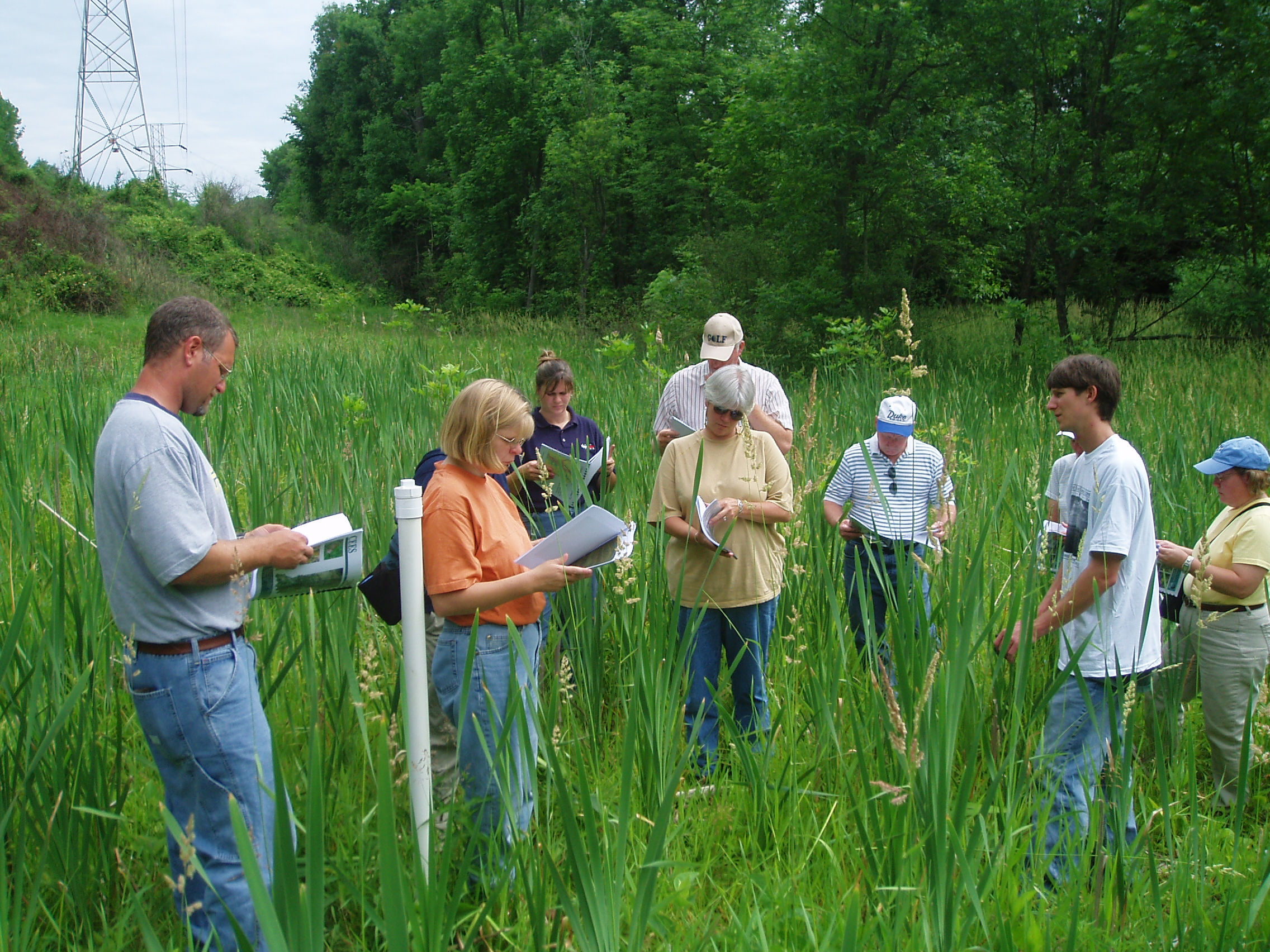Introduction
Geology and origins - This wetland is a result of the glacial origins of the terrain. Meltwater flowing through a hole in the glacial ice left a massive esker composed of sand and gravel. This deposit is evident as a large mounded area covered with Fox Soil typical of sand and gravel deposits. As the glacier continued to melt, tremendous torrents of water flowing through the valley now occupied by the White River eroded the edge of this deposit. This interface allows the aquifer formed in the sand and gravel to continually seep cold, mineral rich ground water to the surface, resulting in this sloping wetland.
This wetland was likely historically and remains partial occupied by a plant community known as a sedge meadow. Areas fed by mineral rich, alkaline ground water and dominated by sedge meadow are known as graminoid fens. The isothermic ground water, combined with large amount of disolved calcium and magnesium created a unique growing environment that harbors an equally unique plant community. Sedges, particularly Tussock Sedge (Carex stricta) make up the backbone of this community. A variety of forbs bloom throughout the growing season. These communities were often kept open by fires set by native Americans that occupied the adjoining bluffs. The fires prevented invasion of woody plants such as willows and shrub dogwood, while encouraging a diverse herbaceous community.
The Seep is located at the interface the Fox Soil occupying the bluff and Sloan soils occupying the drainagway at the base of the slope. Small areas of muck soil are likely contained within the seep. The formation of muck soil is very common in seeps due to the anerobic conditions resulting from the continual ground water saturation. This anerobic condition results in a failure of the organic plant remains to decompose.
Plant community
The plant community occupying the seep can be roughly divided into four units. These communities include sedge meadow, shaded seep, degraded sedge meadow and phalaris marsh.
The sedge meadow is the least degraded portion of the community. It is dominated by Tussock Sedge (Carex stricta). Several other sedges such as Crested Sedge (Carex cristatella), Bottlebrush Sedge (Carex lurida), and Fox Sedge (Carex vulpinoidea) are occasional members of this community. Other common plant in this community include Swamp Aster (Aster puniceus), Pink Turtlehead (Chelone obliqua), Bonest (Eupatorium perfoliatum), Cowbane (Oxypolis rigidior), Lizard's Tail (Saururus cernuus), and Swamp Goldenrod (Solidago patula). The sedge meadow occupies much of the northern third of the seepage slope.
The shaded seep also remains relatively undegraded. Wet tolerant trees, primarily Black Ash (Fraxinus nigra) and Green Ash (Fraxinus pensylvanica) make up the overstory of this area. The herbaceous layer contains sedges, wetland grasses including Fowl.
Manna Grass (Glyceria striata) and Common Wood Reed (Cinna arundinacea). Herbaceous wildflower of this area include Marsh Marigold (Caltha palustris), Golden Ragwort (Senicio aureus), and Side Flowering Aster (Aster lateriflorus).
The southern two-third of the seepage area has been degraded, likely by runoff coming through a tile that is visible at the at the top edge of the seep. This tile may be importing dirty surface water containing sediment and nutrients resulting in the degradation of the seep below. This area, referred to as the degraded sedge meadow is dominated by Broad-Leaved Cattail (Typha latifolia) and Reed Canary Grass (Phalaris arundinacea), plants that typically exploit degradation to form aggressive monocultures. Occasional specimans of species that dominate the high quality sedge meadow still persist in areas of the degraded sedge meadow.
The final division of the seep, the Phalaris Marsh, is equally degraded. This area occupies the drainage along the base of the seepage area. As the name indicates, it is dominated by exotic Reed Canary Grass. A few aggressive forbs such as Cupplant (Silphium perfoliatum) and Boneset manage to persist in this area.
Stewardship
Graminiod Fens are an early successional plant community, therefore they require stewardship in order to maintain there open nature. Historically, fires set by native Americans kept many of these environments opens since the sedges make excellent fuel. In the abscence of fire, shrub willows and dogwood will invade the fen and replace the herbaceous community. Wet tolerant trees such as Black and Green Ash may also invade and eventually render the habitat completely shaded.
This seepage area remains open due to its location in the right-of-way of high tension wires maintained by Indianapolis Power & Light. Maintenance crews for the utility have removed woody vegetation that would otherwise have invade the fen. Unfortunately the prescence of the high tension wires overhead makes the use of the preferred maintenance method of fire excessively dangerous due to the risk of elecrtical arcing within the smoke column. Therefore, continued mechanical removal of invading woody material is the best way to maintain the sedge meadow. Restoration of the degraded portions of the seep would require extensive investigation of the hydrology and adjacent tile system which is beyond the scope of this report.
Bibliography
- Deam, Charles C. 1940. Flora of Indiana. Department of Conservation, Indianapolis. 1940.
- Gleason, Henry A. and Arther Cronquist. Manual of Vascular Plants of Northeastern United States and Adjacent Canada. Second Edition. N.Y. Botanical Garden, Bronx. 1991.
- Sturm, Ralph H. and Richard H. Gilbert, Soil Conservation Service, Soil Survey of Marion County, Indiana. United State Department of Agriculture, 1978
- Swink, Floyd and Gerould Wilhelm. Plants of the Chicago Region. Fourth Edition, Indiana Academy of Science, Indianapolis. 1994.



